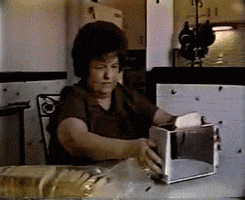Yup, Pods wouldn't show up on a TDS until perhaps they exploded from immersion in fresh( pH 7) water?I had a feeling it was an organism...
But wait, this a chemistry forum!

Follow along with the video below to see how to install our site as a web app on your home screen.
Note: This feature may not be available in some browsers.
Yup, Pods wouldn't show up on a TDS until perhaps they exploded from immersion in fresh( pH 7) water?I had a feeling it was an organism...
But wait, this a chemistry forum!

I think that tripped up the AI a bitI'm going to say - mixing human emotions to a chemical/element/compound might not be totally fair.
Acetic acid liquid won’t impact tds. Vinegar will have some tds because a small amount of the acetic acid splits into acetate and H+ [the acetic acid form, which comprises the great majority of acetic acid/acetate in vinegar doesn’t impact tds]
FWIW, the degradation of organics is a big process in the ocean, and is entirely natural. Acetate (the organic in vinegar) is thought to be the largest turnover organic in the ocean, and may be the most common organic in sediment pore water.
Acetate has many uses in organisms.
It can be oxidized with O2 to give energy plus CO2 and bicarbonate.
it can also be used as a building block to make larger biomolecules. Fatty acids are made from acetate as a building block, for example.
Here's a typical paper that shows corals can take up acetate:

Lipogenesis in the intact coral Pocillopora capitata and its isolated zooxanthellae: Evidence for a light-driven carbon cycle between symbiont and host - Marine Biology
Surface tissue of the reef coral Pocillopora capitata contained approximately 34% lipid on a dry weight basis. Of this, 75% was storage lipid (wax ester and triglyceride) and 25% structural (phospholipid, galactolipid, etc.). Based on chlorophyll a: lipid ratios of intact coral and isolated...link.springer.com
"Coral tips and isolated zooxanthellae were incubated with sodium acetate-1-14C in light and dark to obtain lipogenic rates and proportions of fatty acids and lipid classes synthesized. The rate of lipid synthesis from acetate-1-14C by intact coral was stimulated three-fold in the light (1200 lux), which indicated that the majority of coral lipogenesis occurred in the zooxanthellae. Intact coral triglycerides contained ca. 68% of the 14C-activity and wax esters ca. 21%."
Did I miss the explanation about the TDS? Because I'm not sure about that. Acetate has to have a partner. Acetate will not be seen with a TDS monitor at any pH. But its perhaps semantics.First, honorable mention to CO2. That definitely can fit the 2 criteria.
Many organisms in a reef tank can consume CO2. As a gas or solid, it won’t have any tds, but it will in water at pH 7.
The answer I was looking for was Acetic Acid (Vinegar)
Quote from @Randy Holmes-Farley
Here’s some info about organisms and acetate:
Sponges, bacteria, and corals can consume acetate.
Thanks for playing, everyone!
And thank you @Randy Holmes-Farley for letting me have fun with this one.
I can only give quotes by Randy and hope he’ll pop in to explain more.Did I miss the explanation about the TDS? Because I'm not sure about that. Acetate has to have a partner. Acetate will not be seen with a TDS monitor at any pH. But its perhaps semantics.
Acetic acid isn't charged either, but in water at pH 7 it will dissociate into acetate and H+, both of which conduct and would be detected:
CH3CO2H --> CH3CO2- + H+
Interesting - since H2O also disassociates into H+ and OH- = I'm assuming that thats why pH7 is important. Agree - awaiting Randy's opinionI can only give quotes by Randy and hope he’ll pop in to explain more.
^^ 1/2 a point?Ehhh, H+?

Did I miss the explanation about the TDS? Because I'm not sure about that. Acetate has to have a partner. Acetate will not be seen with a TDS monitor at any pH. But its perhaps semantics.
Thanks - this was my understanding - one followup - so, in reality - at nearly any pH (not specifically 7) - acetic acid will not be detectable by ph. Without a buffer, how would acetic acid exist at pH 7?Acetic acid, CH3CO2H, cannot be detected by a conductivity (TDS) meter since it is uncharged. Thus, dropping a conductivity meter into a bottle of pure acetic acid will show no conductivity.
In water at pH 7, acetic acid will exist mostly as acetate, CH3CO2-, which will show on a conductivity meter.
In vinegar, at a pH in the 2's, there is some conductivity from some acetic acid dissociating into acetate and H+ (which is why the pH is low), but the vast majority of it exists as uncharged acetic acid.
The point where there are an equal number of acetic acid and acetate molecules is just under pH 5. That pH value is called the pKa. Strong acids have a lower pKa and weaker acids have a higher pKa. Many acids we are familial with (such as HCL/muriatic acid) have a pKa well below zero, while some weak acids, such as the hydroxy group on the ring of the amino acid tryrosine have a pKa above 10.
As to other possible answers, neither ethanol nor carbon (just carbon) won't be detectable by TDS at pH 7 in water.
Water is a little trickier, but would not be detectable by any hobby TDS meter at pH 7. There is a tiny amount of H+ and OH- formed in water at pH 7, and it can be detected by conductivity meters designed for that purpose (those intended to verify the purity of extremely pure water), but that value is far, far below what any normal TDS meter can detect, and in point of fact, such meters never read in TDS units. They read in megaohms of resistivity.

Thanks - this was my understanding - one followup - so, in reality - at nearly any pH (not specifically 7) - acetic acid will not be detectable by ph. Without a buffer, how would acetic acid exist at pH 7?

Thanks - the comment related more to the question as to whether the pH of 7 was important to the question, as compared to a pH of 6 or 8 (I was trying to get my head around whether Acetate would be measured at those levels. Thanks for the answerAcetic acid itself cannot ever be directly detected by conductivity. Only the conjugate base can be detected that way. They are, however, in nearly instantaneous equilibrium, so uncharged acetic acid does impact TDS in the sense that it necessarily impacts the charged form concentration that is directly detected.
At pH 7, in fresh water with a little salt in it, where the pKa is about 4.8, there is about 158 times as much acetate as acetic acid. That is determined by the Hendersen Hasselbach equation, and there are actually online calculators for it. All you need to know if the Ka (or pKa) and the pH.

Henderson-Hasselbalch Calculator
The Henderson-Hasselbalch calculator is a simple biochemical tool for assessing the pH of a buffer solution.www.omnicalculator.com
In reef tank water, the pKa will be lower due to the ions stabilizing acetate relative to acetic acid, but I'm not sure by how much. Even assuming it is not lower, there is 2500 times as much acetate as acetic acid at pH 8.2.
I'm not sure what you are asking in the second sentence, but without any other buffer (recognizing that the acetate/acetic acid pair is itself a buffer), if you add 1 molar part of acetic acid and 158 molar parts of sodium acetate, the pH will be about 7 and there will be acetic acid present.

Thanks - the comment related more to the question as to whether the pH of 7 was important to the question, as compared to a pH of 6 or 8 (I was trying to get my head around whether Acetate would be measured at those levels. Thanks for the answer
